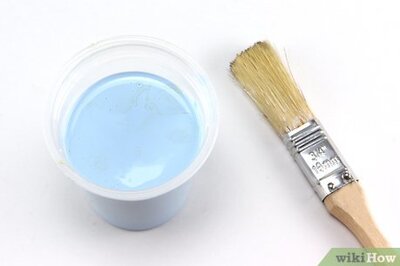
views
In a post Covid-19 world, we’ve all become hyper aware of how germs cause disease. That awareness is now on hair trigger during the monsoons, when everything from the grocery deliveries to our own muddy shoes bring in active germs and pathogens into our otherwise pristine homes.
We carry hand sanitisers in our handbags, ensure that the children know how to wash their hands properly, and clean our floors with high quality floor cleaners that guarantee quality sanitation. We clean our kitchens top to bottom, and our cooking and eating utensils shine bright.
And yet, there is one area that even the most careful amongst us tends to neglect – the toilet. Our toilets, when not properly cleaned and sanitised, can be a source of many diseases in our households. This is doubly so, during the monsoon.
What Makes Toilets Incubate Diseases During the Monsoon Season
Increased Moisture and Mould Growth:
One of the primary challenges during the monsoon season is the excessive moisture that accumulates in toilets. High humidity levels create an ideal breeding ground for mould and mildew. These not only give rise to an unpleasant odour but also pose health risks, such as allergies and respiratory problems. It is also important to check the walls for seepage and water damage – damp walls attract mould, and take much longer to dry out than wet floors.
Waterlogging and Drainage Issues:
Another significant challenge faced during the monsoon season is waterlogging in and around toilets and drains. The excessive rainwater can cause drains to get clogged, leading to stagnant water that attracts mosquitoes and other disease-carrying insects. Waterlogging also hampers the proper functioning of toilets and can create unhygienic conditions. This is particularly true of those of us who live on the ground floor.
Puddles and standing water:
If your toilet also includes a shower, then you’re aware of this problem. We’re a tropical country, and there are a number of vector borne diseases that are caused by mosquitos. We know that the best defence against these diseases is to control the mosquito population. For that, we need to eliminate puddles and standing water.
Keeping Toilets Clean and Well Maintained: The Basics
Because culturally, cleaning toilets is considered work that is ‘beneath’ us, no one taught us how to do it properly. This is work the maid does, or in a pinch, our mothers. But no one taught them either. There are, however, a number of basic things we can do to ensure that our toilets are always up to the mark – particularly during the monsoons.
Ensure Adequate Drainage
One of the primary concerns during the monsoon season is waterlogging. To prevent water from accumulating in and around toilets, it is important to ensure proper drainage systems. Regularly inspect the drainage pipes and gutters, clearing any blockages that may impede the flow of water. If necessary, consider installing additional drains or improving the existing ones to handle the increased water flow during heavy rainfall.
Check and Repair Leaks
Leaks can greatly turn up the volume on the problems caused by heavy rains during the monsoon season. Thoroughly inspect the toilets for any signs of leaks, such as dripping faucets or water seepage. Promptly repair any leaks to prevent water wastage and potential damage to the toilet structure. Regularly check the water supply lines, flush tanks, and pipes for leaks or cracks. It is advisable to consult a professional plumber if you encounter any significant plumbing issues.
Maintain Proper Ventilation
Proper ventilation is essential to prevent the accumulation of moisture and foul odours in toilets, particularly during the monsoon season. Ensure that the ventilation systems, such as exhaust fans or windows, are functioning effectively. Adequate ventilation also helps in reducing the humidity levels inside the toilets.
Active and Passive Pest Control
Active pest control involves using insect repellents and sprays for mosquitoes and flies, and all those gels, dots, lines and sprays used for cockroaches and other creepy crawlies. Passive pest control involves lighting and ventilation, and sealing all the cracks along the drains and the walls themselves. In the monsoon in particular, the windows need mesh coverings too, to keep out flying insects.
Clean and Disinfect Regularly
Depending on how frequently the toilet is used, it is important to establish a cleaning schedule for the toilet bowl itself. It is also important to clean the seat, lid, and outer surfaces of the toilet as well, using a disinfectant cleaner. Regular cleaning and disinfection will help reduce the risk of infections and keep your toilet germ-free. Use a floor cleaner to cleanse the floors, and dry off any damp patches with a mop.
The Education and Awareness Gap
If you’ve missed any of the items on this list, we feel you. There is a crucial gap in this area of knowledge, and it is culturally driven. When we aren’t taught how to do something, and it is always considered someone else’s responsibility, we do it poorly.
This is exactly why Harpic, a leader in the lavatory care segment, has been toiling away all these years, to build a compendium of knowledge around this neglected area of home care. Over the years, Harpic has built strong communication strategies around the need for good toilet hygiene habits in particular, and sanitation overall, through thought provoking campaigns and outreach programs.
Harpic has also joined hands with News18 to create the Mission Swachhta aur Paani initiative. It is, in essence, a movement that upholds the cause of inclusive sanitation where everyone has access to clean toilets. It advocates equality for all genders, abilities, castes and classes and strongly believes that clean toilets are a shared responsibility. Clean and safe toilets for all means that our communities are healthier, our children spend more days in school and less days out sick, girls don’t drop out of school, our workplaces are more diverse places, and that our cities and towns are cleaner, safer, and more welcoming.
Mission Swachhta aur Paani is creating repositories of information on every conceivable topic around toilet use, and how it impacts us individually, as well as the larger society. Of course, it also contains a number of resources that help you educate yourself on how to maintain a healthy and safe toilet environment at home.
Join us here, to learn more about how you can directly and indirectly play a part in moving the needle towards a Swachh and Swasth Bharat.




















Comments
0 comment